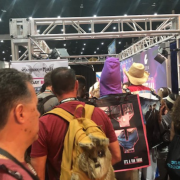Gorée Island Dakar, Senegal

Gorée Island Senegal
The slave trade routes of the Atlantic Ocean had layovers, some of which are incredibly small and well-hidden today. Although the slave trade is a subject of shame and sadness, the architecture left behind is still worth exploring.
Gorée Island, one of the 19 districts of Dakar, is a small island on its own, but it had immense strategic importance.
Slave Trade
The inhabitation of Gorée Island wasn’t until the arrival of Europeans because the island didn’t have suitable conditions for living. For instance, drinking water was scarce.
The island was first discovered by the Portuguese who built a stone chapel and a cemetery.
Over time, Dutch and British forces also arrived at the island, but their presence was short-lived. At the time that slaves from the mainland Senegal were transported across the Atlantic Ocean.
The French invasion in 1677 marked the beginning of the colonial era that lasted for almost three centuries despite occasional defeats by the British forces.

The People
Gorée Island was inhabited by mixed people, the French, Africans as well as the American merchants.
In 1784, an Afro-French family built a house for the slaves to be accommodated during their stopover.
The house was later called the House of Slaves and is now a UNESCO Heritage site.
The slave trade through the island declined upon the French Revolution in 1794. Napoleon entirely abolished it in 1815. This shifted the trading towards nutrients such as peanuts.
This was when the current port was initially built. Also, some merchant families whose source of income was the slave trade decided to leave the island.
Later it was annexed to Dakar (the capital of Senegal) by the French Colonial Government.

The French Colonial Government built a government teachers’ college called Ecole normale superieure William Ponty in 1913. The school operated until 1938.
Later on, many graduates of the school took part in gaining independence from France in 1960.
The island has been declared a UNESCO World Heritage Site in September 1978.
The main historical buildings under the UNESCO protection are the Slave House, William Ponty School, the Maritime Museum, and Fort d’Estrées.
The government of Senegal is currently conducting research called Gorée Archeological Project, which aims to collect artifacts
Source: History lessons/ Education/ African Studies



